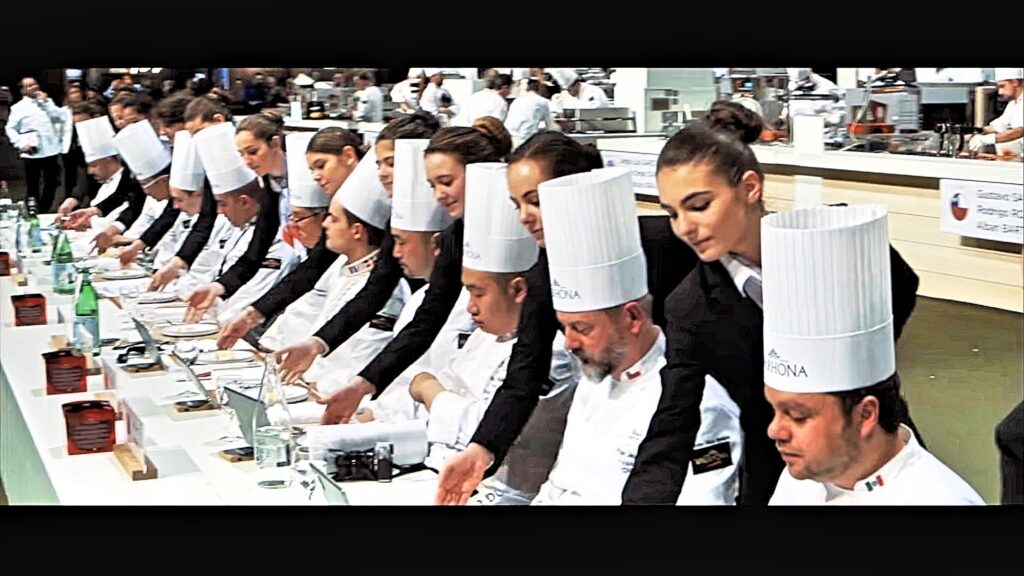Since the general public – and even some pastry professionals – are not familiar with the Coupe du Monde de la Pâtisserie, we have been breaking down every component and – hopefully, giving a better explanation of what it is and what these pastry chefs go through during the process.
Restaurant-style Desserts
The restaurant-style dessert test is a relatively new addition to the Coupe du Monde de la Pâtisserie. This test is different from the other tests in a number of ways. The Jury that judges the other tests does not judge this category.
The Jury for the restaurant-style dessert is judged by seven different Jury members – four restaurant pastry chefs and three chefs.
Additionally, each team must make 10 desserts for judging and presentation, but a mock dessert is not required.
The desserts, which are to include Debic dairy products, include eight for the Jury to taste and evaluate, one for the official photo, and one that will be presented to the public.
The other difference is that each of these desserts must be entirely made on-site and a la minute or “on the fly.”
The rules state that this restaurant-style dessert must be presented on a plate of the team’s choosing (and provided by each team) and prepared “on the fly” just as if it was ordered and served in a restaurant. These “ephemeral” desserts are “tasted immediately after [being] sent for tasting, allowing for more delicate temperatures and textures than what is possible in a pastry shop.”
In keeping with the restaurant service theme, all 10 plated desserts will be sent in a “restaurant-style service flow,” in other words – all at the same time. Each team will have a predetermined time when the desserts must be sent to the Jury. The order and time are determined by the random order when each team was assigned their laboratory.

Each team will know when their time is up by a gong sound. Once the gong sounds for each team, the candidates must immediately stop working and raise their hands up. Although no major work may continue after the gong, last-minute touches that will enhance the dessert may be added in front of the Jury. Each team will have one minute to add any flourishes such as a scoop or quenelle of ice cream, a coulis, espuma (foam), or a sauce after the plates have been sent out. Any work done after that gong that is not part of the last-minute touches will result in a deduction of points from the final score.
Although this dessert must be made entirely during the competition, each team must bring all the ingredients for this dessert pre-weighed and portioned out. As with the other ingredients, they will be inspected and verified by the I.O.C. on the eve of the team’s scheduled tests. The Jury will verify the ingredients and weights against the pre-submitted recipe. If the dessert includes chocolate, dairy, or fruit purées they must be from the official sponsors – Valrhona, Debic, and Capfruit. Failure to use sponsor products will result in a deduction of points.

Other requirements, many of which are the same for the other tests, include:
- Ingredients must not include any coloring agents, titanium dioxide (E171) or iron oxides (E172).
- The restaurant-style dessert must not currently be available in a pastry shop.
- It can be hot, cold, frozen, or a mix of different temperatures and textures and more delicate than what can be found in a pastry shop.
- Each team, should they wish to do so, may work with a restaurant pastry chef on the design and concept of the dessert.
- The dessert must be presented on a plain white plate. The style of the plate is up to the team’s choosing. The maximum diameter of the plate is 28 cm (11 inches) and 6 cm in height (2.36 inches). Team USA will be using china from its North American sponsor, Steelite International.
The next story in the series will discuss the second set of tests – the first of three artistic creations or centerpieces, the Sugar Artistic Creation.